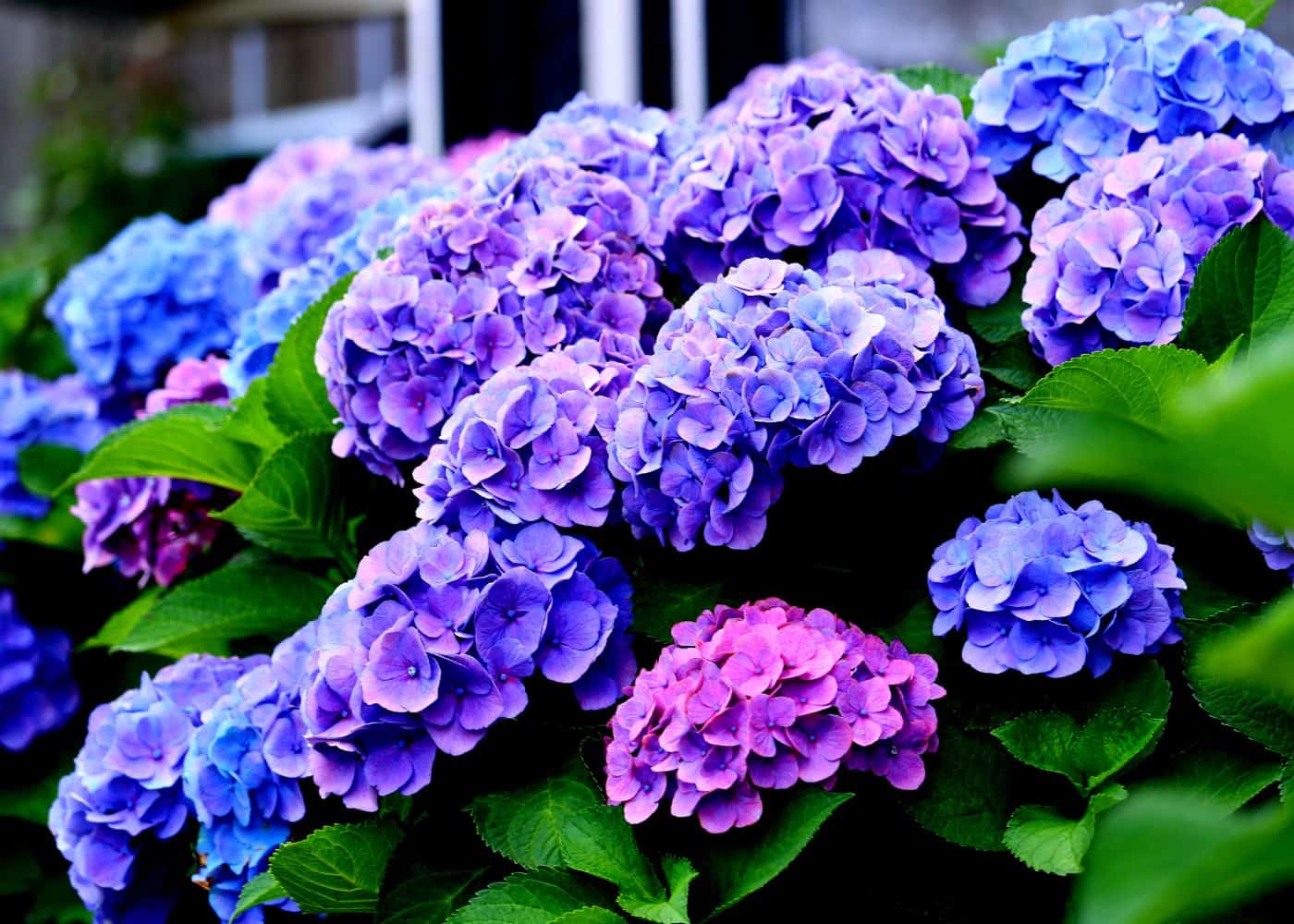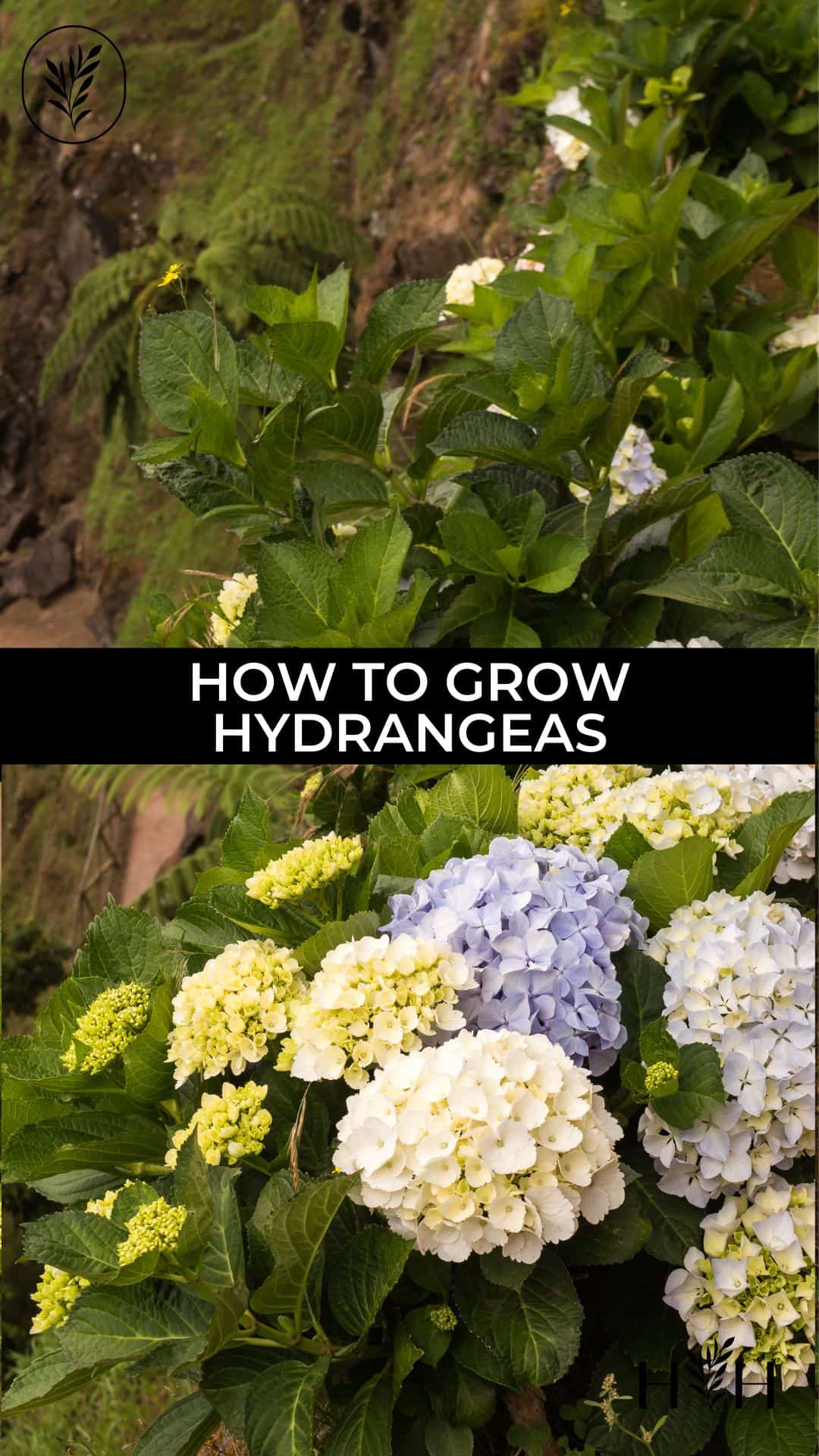Hydrangeas grow best in an area with morning sun and afternoon shade. They prefer well-drained soil rich in organic matter with a neutral to slightly acidic soil pH. Hydrangeas should be watered regularly, keeping the soil consistently moist but not waterlogged. They can also benefit from a springtime application of natural fertilizer and from organic mulch.
How to grow hydrangeas
Hydrangeas are beautiful and popular flowering shrubs that can add color to any garden. Planting, growing, and caring for hydrangea plants is easy, but they do require some special care to ensure healthy growth and abundant blooms.
There are over 80 accepted species in the botanical genus Hydrangea. Most cultivated varieties fit into one of six common types:
- Bigleaf hydrangeas (Endless Summer, Nikko Blue, Bloomstruck)
- Smooth hydrangeas (Annabelle, Incrediball)
- Panicle hydrangeas (Limelight, Bobo)
- Oakleaf hydrangeas (Ruby Slippers
- Mountain hydrangeas (Tuff Stuff
- Climbing hydrangeas
Most types of hydrangea plants prefer partial shade or morning sun with afternoon shade. They need well-drained soil with plenty of organic matter added in for best results. Choosing the right spot when planting hydrangeas is important since they don’t like being moved once established.
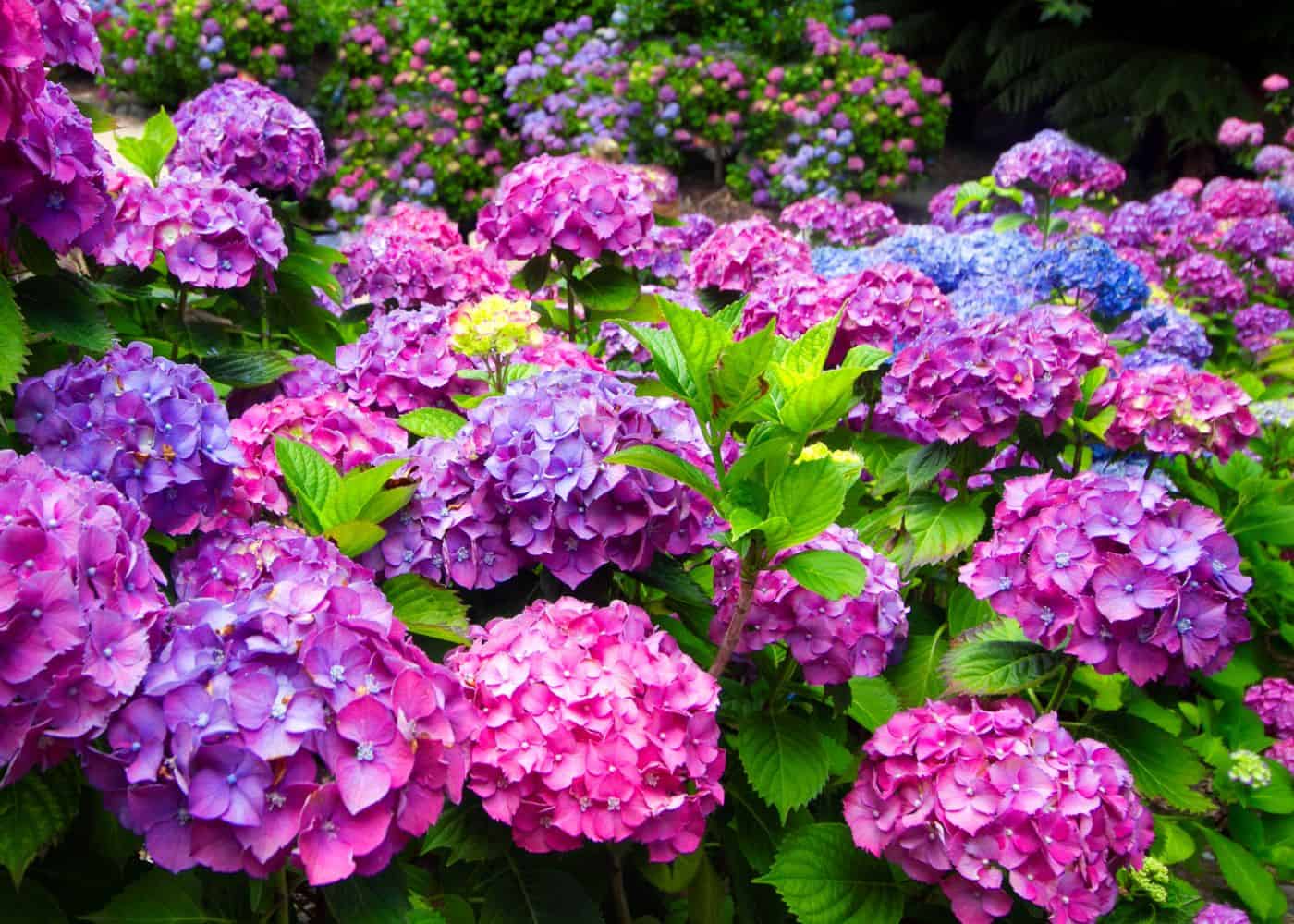
When planting your hydrangea, dig a hole twice as wide as the root ball and just deep enough so that the crown of the plant is at ground level when planted. If you are adding fertilizer, mix it into the backfill before filling in around the roots and water thoroughly after planting.
Newly planted hydrangea shrubs should be watered deeply every few days until established (about six weeks). After that, water regularly during dry spells or periods of extended heat; about 1 inch per week should suffice for mature plants in most climates.
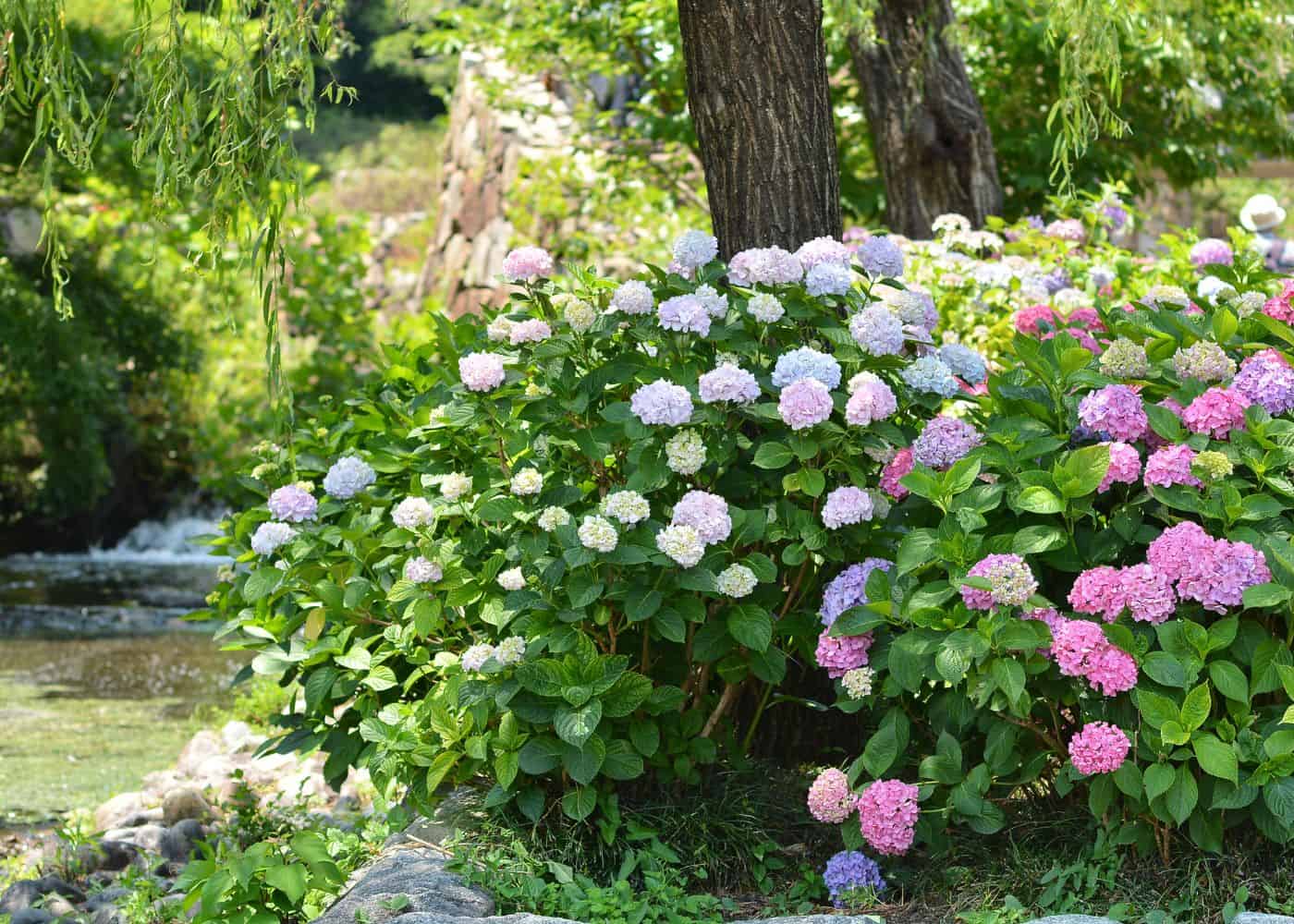
Mulch helps keep weeds away from young plants while also helping retain moisture in hot weather – both important factors for successful growth. Spread 2-3 inches of mulch around your newly planted hydrangea shrubs but avoid piling up against stems or trunks, which could cause rot over time.
A balanced fertilizer applied according to package directions will help promote healthy growth and lots of flowers each season. For best results, fertilize your hydrangea plants in early spring before new growth begins; this will give them an extra boost going into the summer months when flower buds form on old woody branches from the previous year’s growth cycle.
Pruning hydrangea shrubs is unnecessary unless you want to shape or control size/growth habits. If so, prune lightly after flowering has finished each year by removing dead woody stems down near ground level. This encourages fresh new shoots, which will produce more flowers the following season.
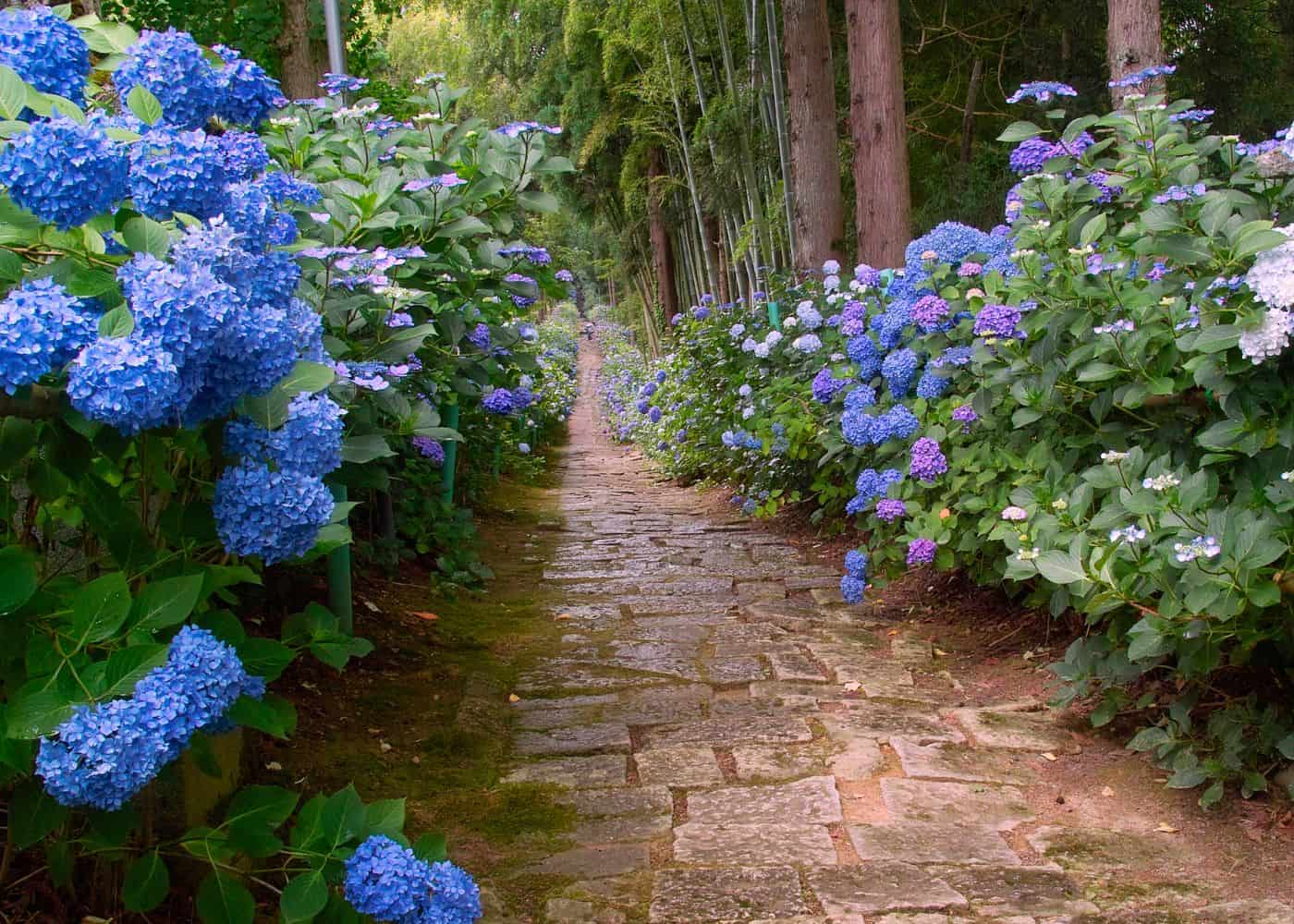
Ideal hydrangea growing conditions
Different hydrangea species have different needs regarding sunlight, soil pH, and other environmental considerations. Here is a summary by type.
Planting location preferences by species
Bigleaf hydrangeas (Hydrangea macrophylla) do best in partial shade and well-drained soil that is slightly acidic. They can tolerate full sun, but too much direct sunlight can cause the leaves to burn or fade in color. Bigleaf hydrangeas should also be planted away from windy areas, as strong winds can damage their delicate blooms.
Oakleaf hydrangeas (Hydrangea quercifolia) prefer more sun than bigleaf varieties and will thrive in full sun if given enough water during dry spells. Oakleaf Hydrangeas need well-drained soil with plenty of organic matter added for moisture retention and good drainage; however, they don’t like overly wet soils.
Smooth hydrangeas (Hydrangea arborescens) are versatile plants that will grow in sunny and shady spots as long as the soil is moist but not soggy. They prefer a slightly acidic pH level between 5 and 6. Smooth hydrangeas may need supplemental watering during hot summer months or periods of drought since they aren’t drought-tolerant like some other types of hydrangea shrubs.
Panicle hydrangeas (Hydrangea paniculata) are hardy plants that do well in full sun or partial shade with moist, well-draining soil conditions similar to those preferred by oak leaf hydrangeas mentioned above. However, panicle hydrangeas require an even higher acidity level than oak leaf varieties – ideally around 4 – 5 on the pH scale – so you may want to consider adding sulfur amendments if your soil’s pH isn’t low enough already.
Mountain hydrangeas (Hydrangea serrata) are native to the mountains of Japan. They are deciduous shrubs with wide, serrated leaves and summer clusters of showy white flowers. The blooms turn pink or blue depending on soil pH levels in the area.
Climbing hydrangeas (Hydrangea petiolaris) are an excellent choice for a large, striking vine to cover an arbor or trellis. It’s a fast-growing vine that needs support for the weight of its leaves and flowers. The vine will grow much more quickly if it gets some direct morning sun, but this flowering vine is tolerant of full shade.
No matter the species, ensure that you select an area with adequate light levels based on the specific needs of your chosen plant and provide ample space between each plant to allow for growth without overcrowding nearby shrubs or trees over time.
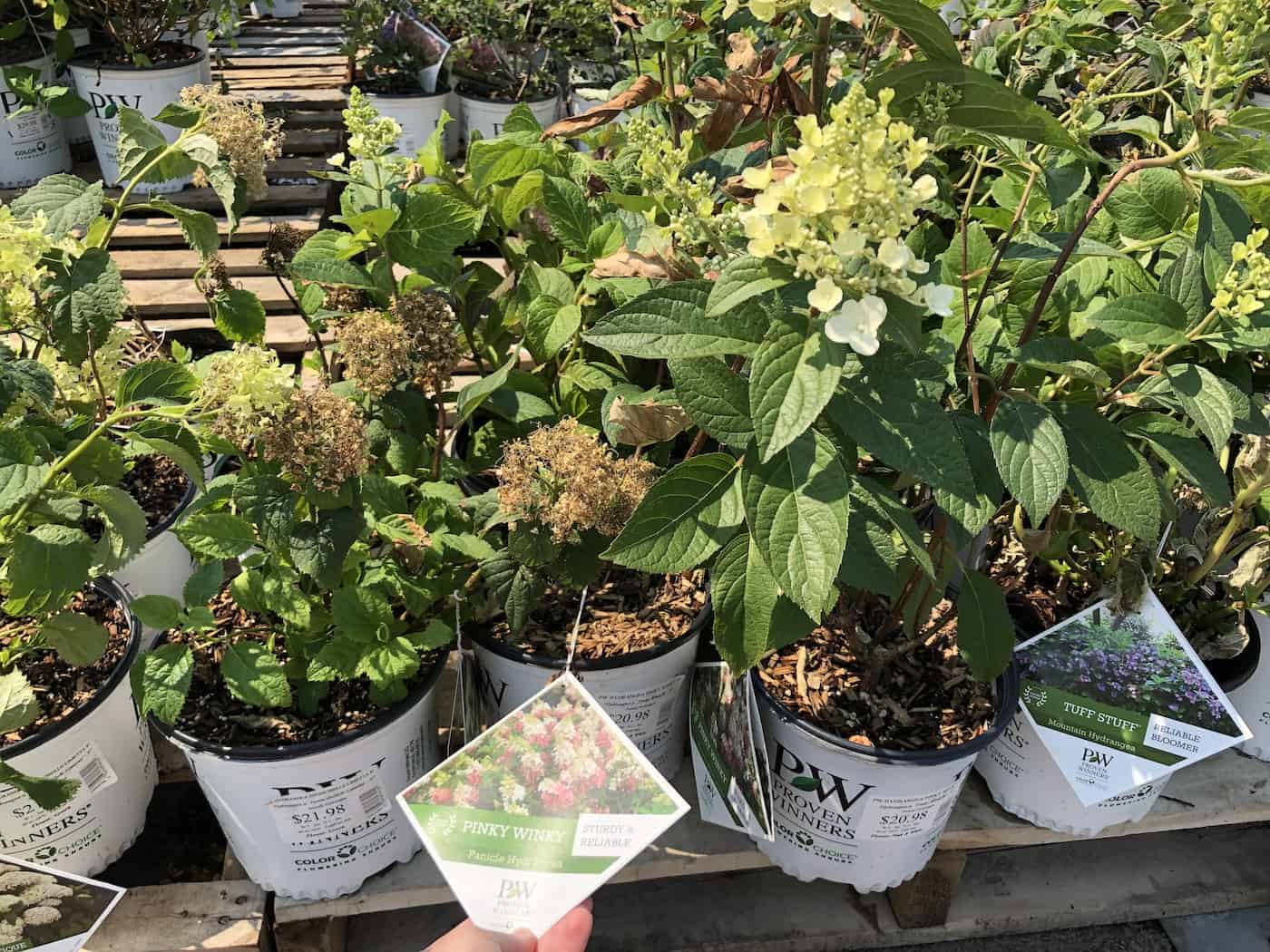
Planting hydrangeas in your landscape
Planting hydrangeas is a great way to add color and texture to your garden. Hydrangeas are easy to grow and can be planted in spring or fall, depending on your climate. When planting hydrangeas, ensure they get plenty of sun and have some shade during the hottest part of the day. Plant them at least three feet apart so that their roots have room to spread out and develop properly.
When it comes time for planting, dig a hole twice as wide as the root ball of your plant and just deep enough so that when placed in the hole, its crown (where the stem meets the roots) will be level with the ground surface. Place your plant into this hole carefully, making sure not to disturb any roots or stems too much. Backfill around the sides with soil until firmly packed down, then water thoroughly once planting is finished.
To ensure successful growth for your new plants, mulch around each one after planting has been completed; this helps keep moisture levels consistent throughout hot summer days while also helping prevent weeds from taking over your garden beds. Use an organic material such as wood chips or shredded bark, which should be applied two inches thick all around each plant’s base – don’t forget about those areas between plants, too. Finally, give them another good watering.
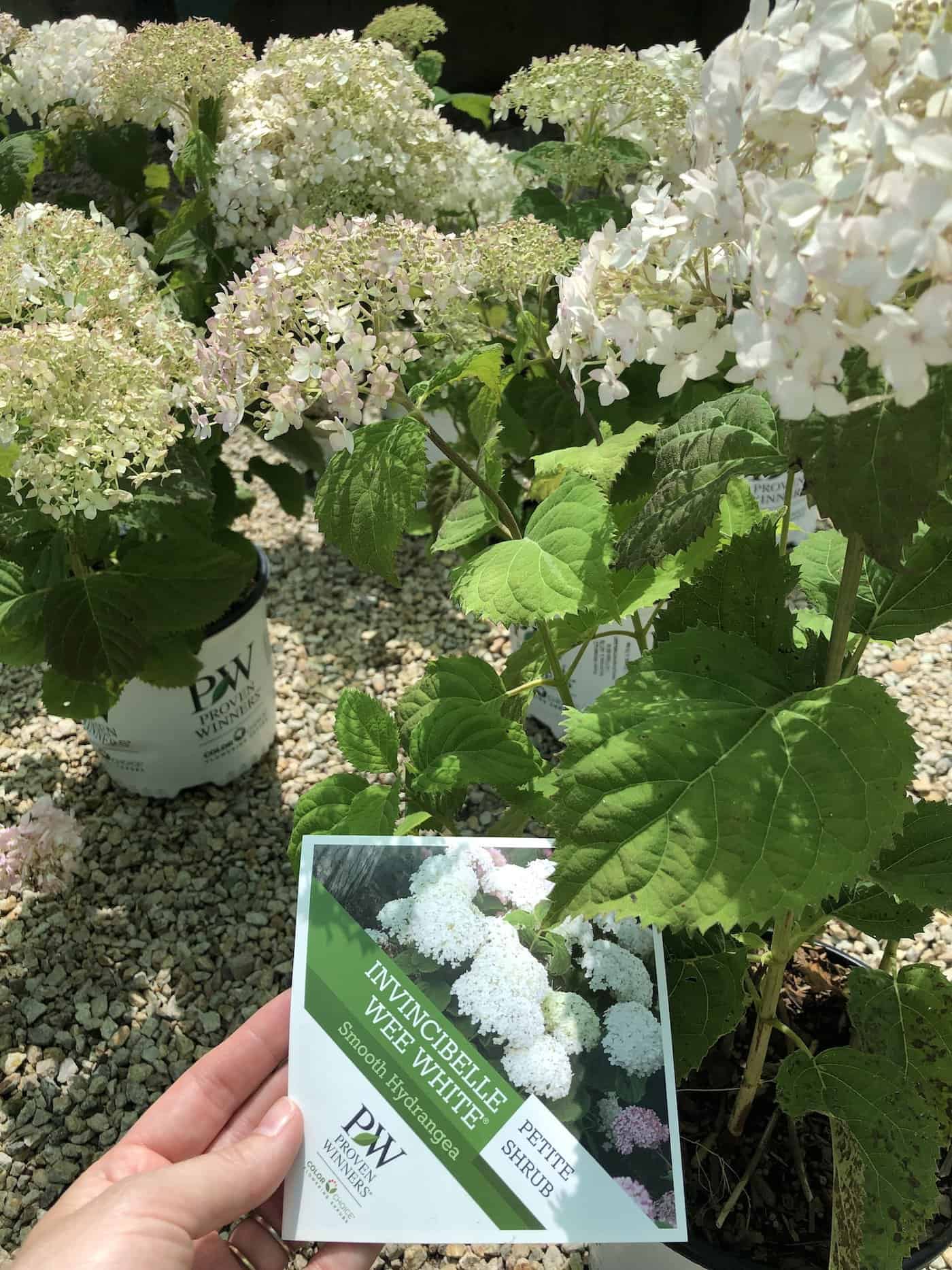
Watering hydrangeas
Watering hydrangeas is an important part of caring for these beautiful shrubs. Hydrangeas need regular watering to stay healthy and vibrant, but they don’t like to be overwatered. Generally speaking, hydrangeas should be watered deeply once a week during the growing season. You may need to water more often during hot weather or drought conditions.
When it comes to how much water your hydrangea needs, it depends on several factors, such as soil type and climate conditions in your area. The best way to determine if your plant needs water is by checking the soil around its roots with your finger or a trowel; if it feels dry about two inches down, then it’s time for a drink. A good rule of thumb is that each bush should receive at least one inch of water per week from rain or irrigation. If possible, try not to get the leaves wet when watering so that fungal diseases can be avoided.
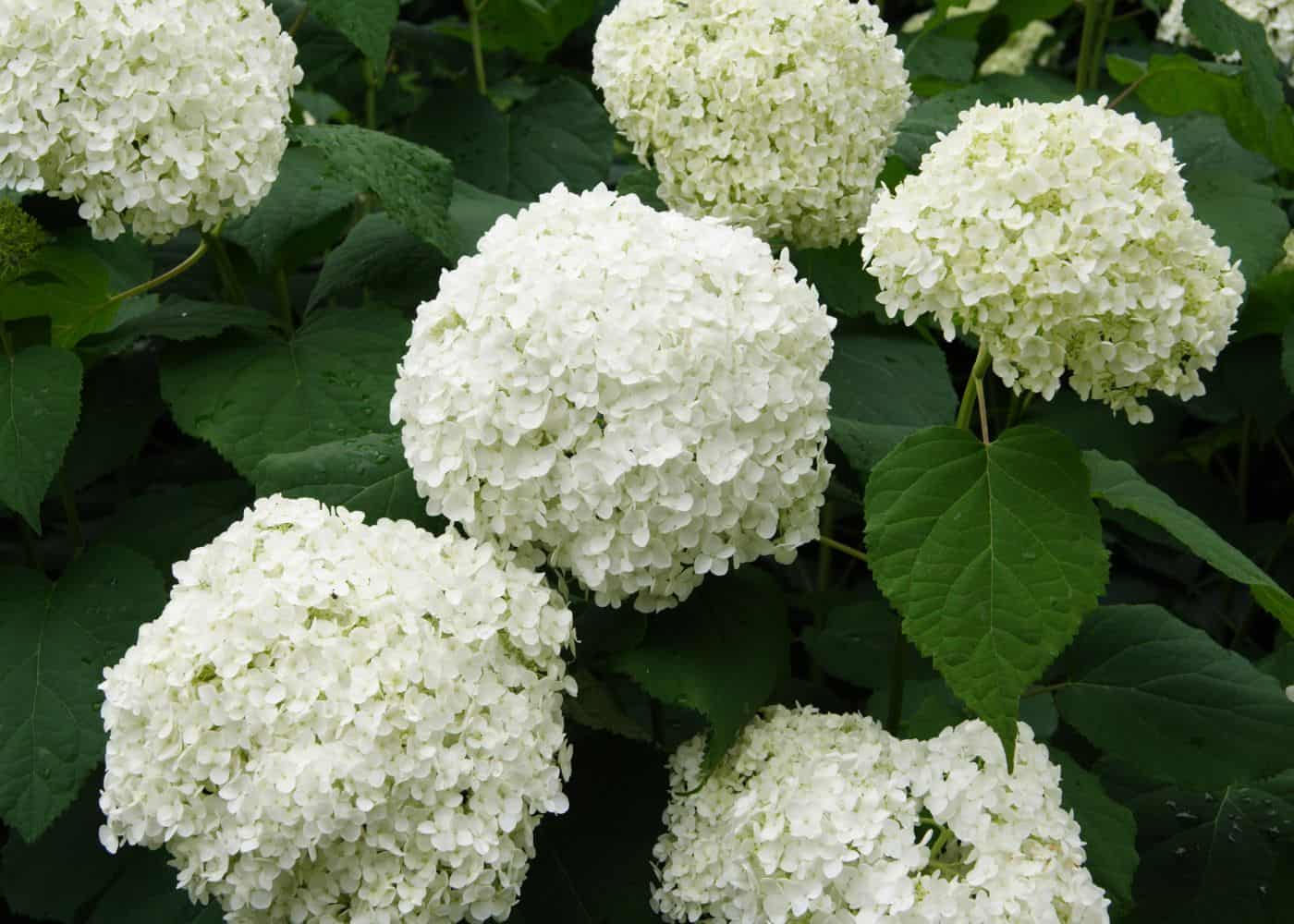
If you have clay soils in your garden, then less frequent watering will usually help encourage deep root growth, which helps keep plants healthier during periods of heat stress and drought. When using sprinklers, make sure they reach all parts of the shrub evenly so that some areas aren’t getting too much water while others are being neglected; this could lead to uneven growth patterns and weak spots in the plant’s structure over time due to lack of adequate moisture reaching certain parts of the bush’s root system.
Finally, remember that newly planted hydrangeas require more frequent watering than established ones since their root systems haven’t had enough time to develop fully into their environment – typically every other day until they become well established (about six weeks). You can enjoy lush blooms year after year with proper care and attention.
Watering hydrangeas is essential for their health and growth. Now that you know the basics of watering, let’s look at mulching to further help keep your hydrangeas healthy.
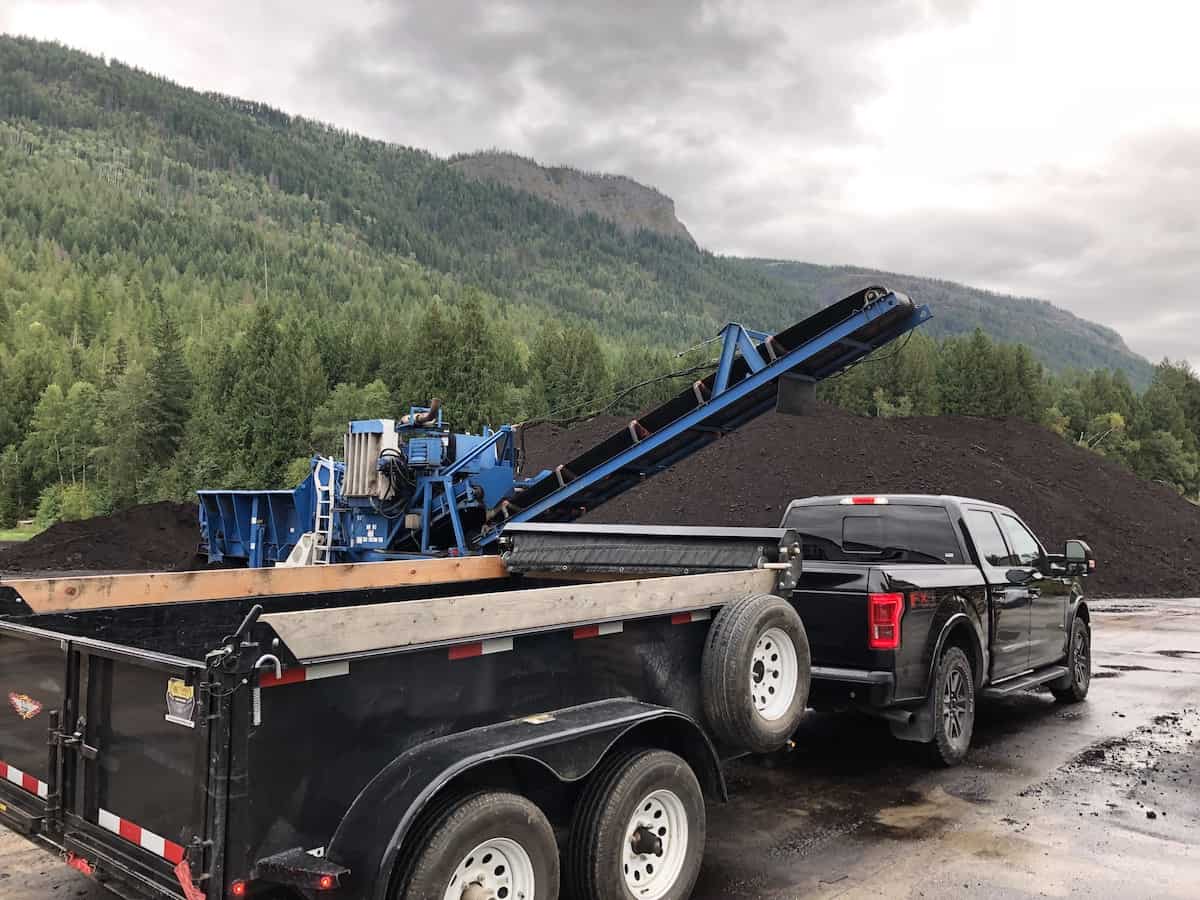
Mulching around hydrangea plants
Mulching hydrangeas is an important part of their care. Mulch helps keep the soil moist, reduce weeds, and provide plant nutrients. It also adds a nice aesthetic touch to your garden or landscape.
Organic mulches are best for hydrangeas as they break down over time and add beneficial organic matter to the soil. Composted yard trimmings are a great choice because they’re readily available in most areas and can be applied easily with minimal effort. They will help improve drainage, aeration, and water retention in the soil while providing essential nutrients like nitrogen that promote the healthy growth of your plants.
In addition to composted yard trimmings, other types of organic mulch, such as wood chips or bark, can also be used around hydrangea shrubs. These materials should be applied at least 2-3 inches thick but not more than 4 inches thick so that it doesn’t smother the roots of the plant or create too much shade on its leaves which could lead to disease problems later on down the line.
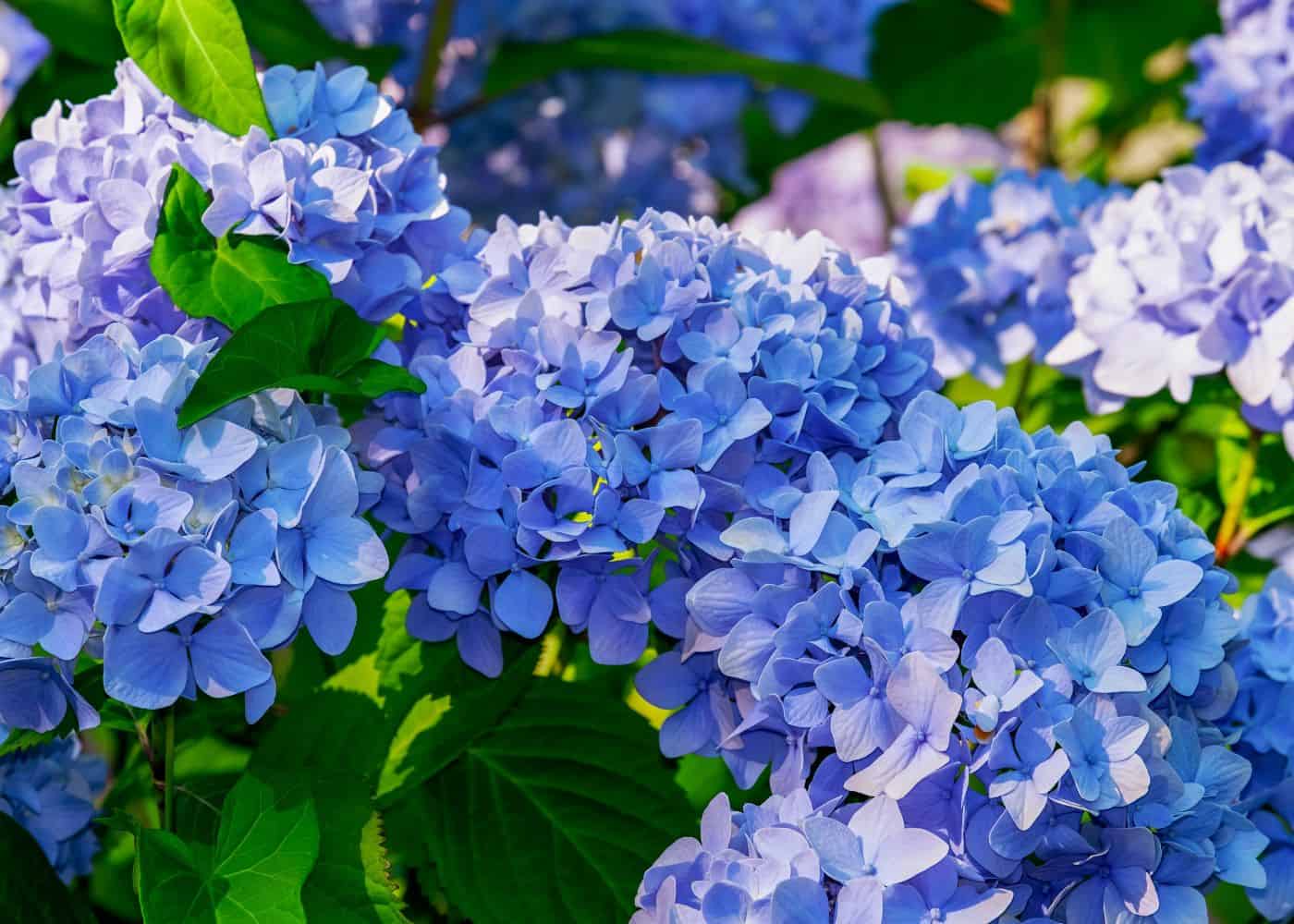
It’s important to note that when using any type of mulch, you should always leave a few inches between it and the base of your shrub so that air circulation isn’t impeded, which could cause fungal diseases like root rot or crown rot from forming on its roots or stems respectively. You should also avoid piling up too much mulch around young plants since this could suffocate them by preventing oxygen from reaching their roots properly, which would significantly stunt their growth if left unchecked for long periods of time.
Finally, remember that all types of organic mulches need regular replenishment throughout each growing season since they tend to decompose quickly due to exposure to rainwater and sunlight; however, this process does help enrich soils with additional nutrients needed for healthy plant growth.
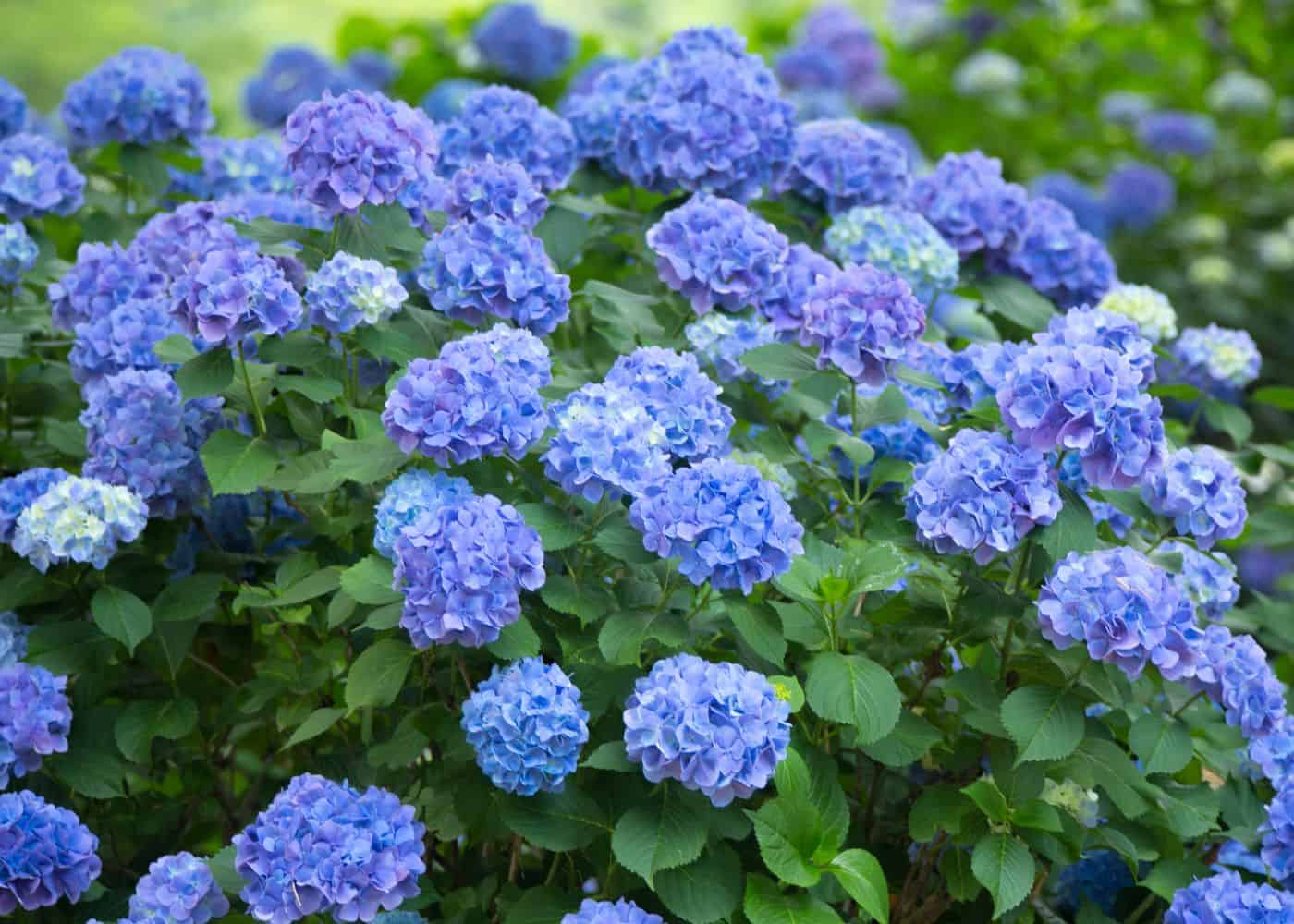
Fertilizing hydrangea plants
Fertilizing hydrangeas is important in keeping them healthy and looking their best. Hydrangeas are usually fertilized once or twice a year, once in the spring and perhaps again in mid-summer.
When applying fertilizer to hydrangea plants, it’s important to follow the instructions on the package carefully so that you don’t over-fertilize. Generally speaking, one cup of granular fertilizer per plant should be enough for most varieties of hydrangea shrubs. Sprinkle it evenly around each plant at least six inches from its base and then thoroughly water it after application.
It’s also important to remember that too much nitrogen can cause problems with blooming; if you notice yellowing leaves or poor flowering performance in your hydrangeas, reduce the amount of nitrogen used when fertilizing next time around. Also, avoid using fresh manure as this can burn delicate roots and foliage due to its high levels of nitrogen content.
Finally, always make sure that any mulch applied over the top of your fertilized plants does not touch their stems directly, as this could lead to rot or disease issues down the road. With proper care and attention given during fertilization season each year, you can ensure beautiful blooms come summertime.
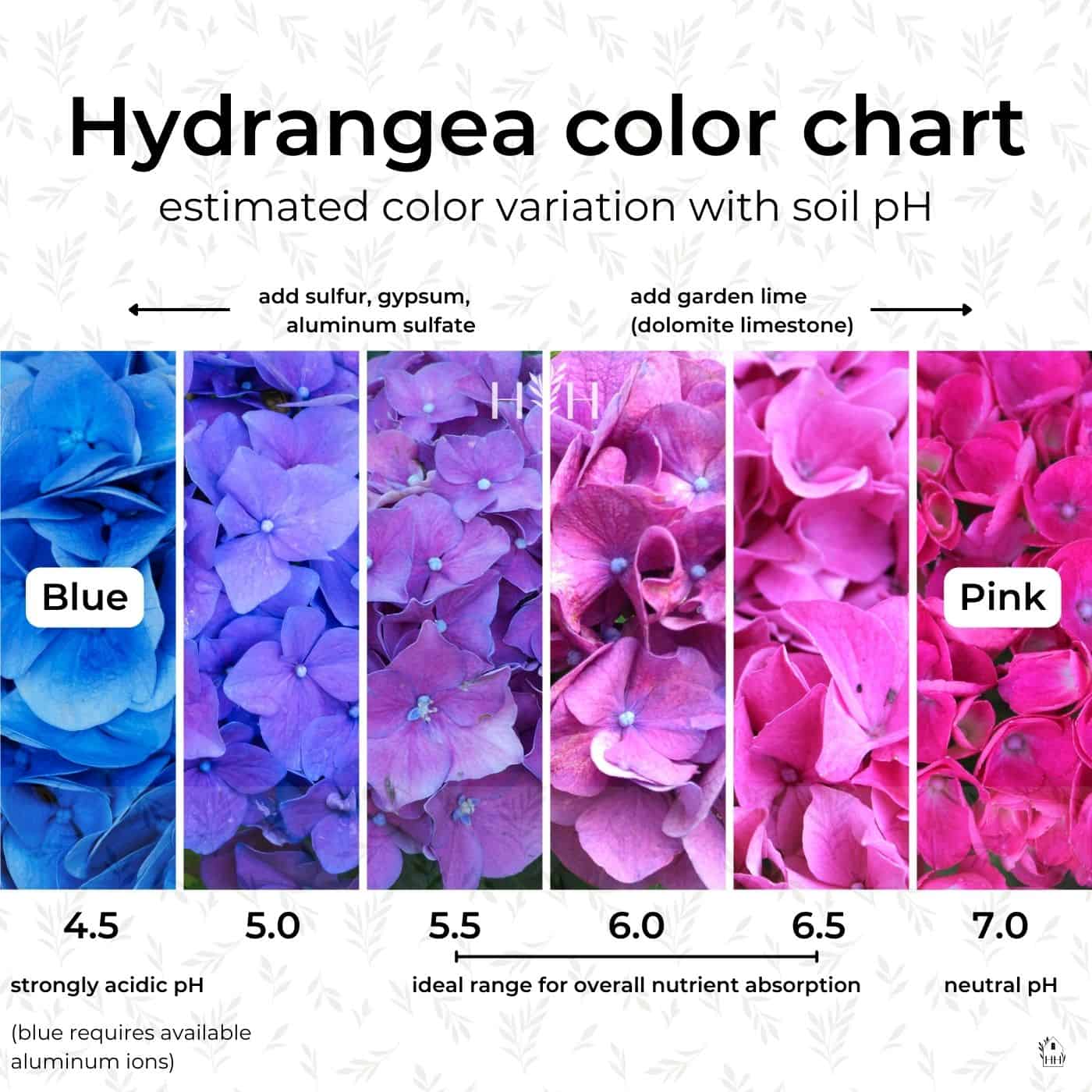
Changing hydrangea color with soil amendments
In addition to adding a wide range of important minerals, you can add amendments to the soil to change the flower color of certain species. Only bigleaf and mountain hydrangeas change color with soil pH, but these species are both quite common.
Soil acidifiers can help turn the flowers blue, while garden lime can make them closer to pink. You can also do purple. Here’s a detailed guide on changing hydrangea color. The process can take a year or two, but it is quite a fun experiment!
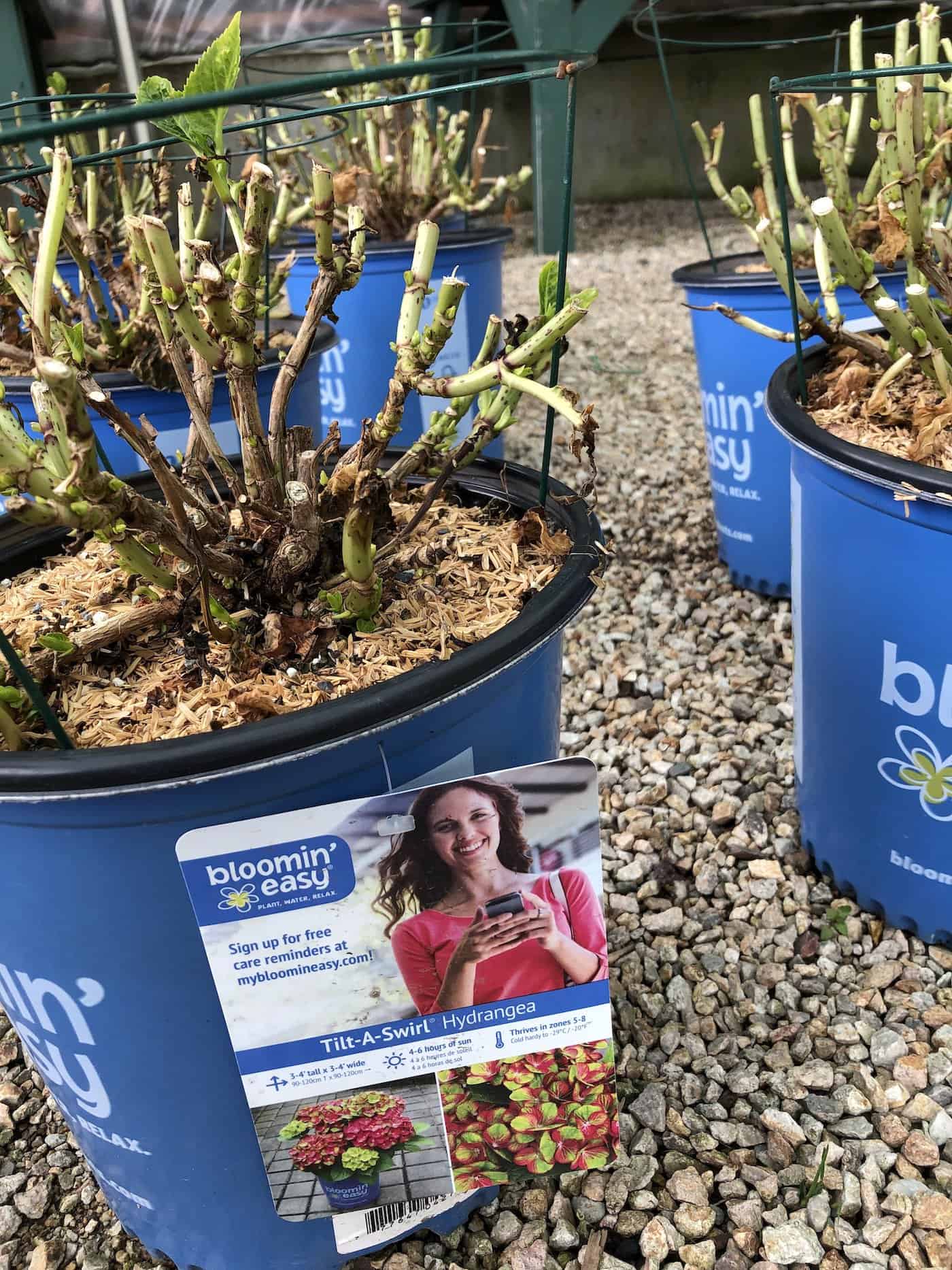
Pruning hydrangea shrubs
Pruning hydrangea shrubs is important in keeping them healthy and looking their best. Knowing when to prune your particular variety of hydrangea will help you get the most out of your plants.
Some species, such as smooth and panicle hydrangeas, should be pruned in early spring before new growth begins. This type of pruning helps promote strong blooms for the upcoming season. Start by removing any dead, diseased, or damaged branches first, then take out crossing or rubbing branches that can cause damage over time.
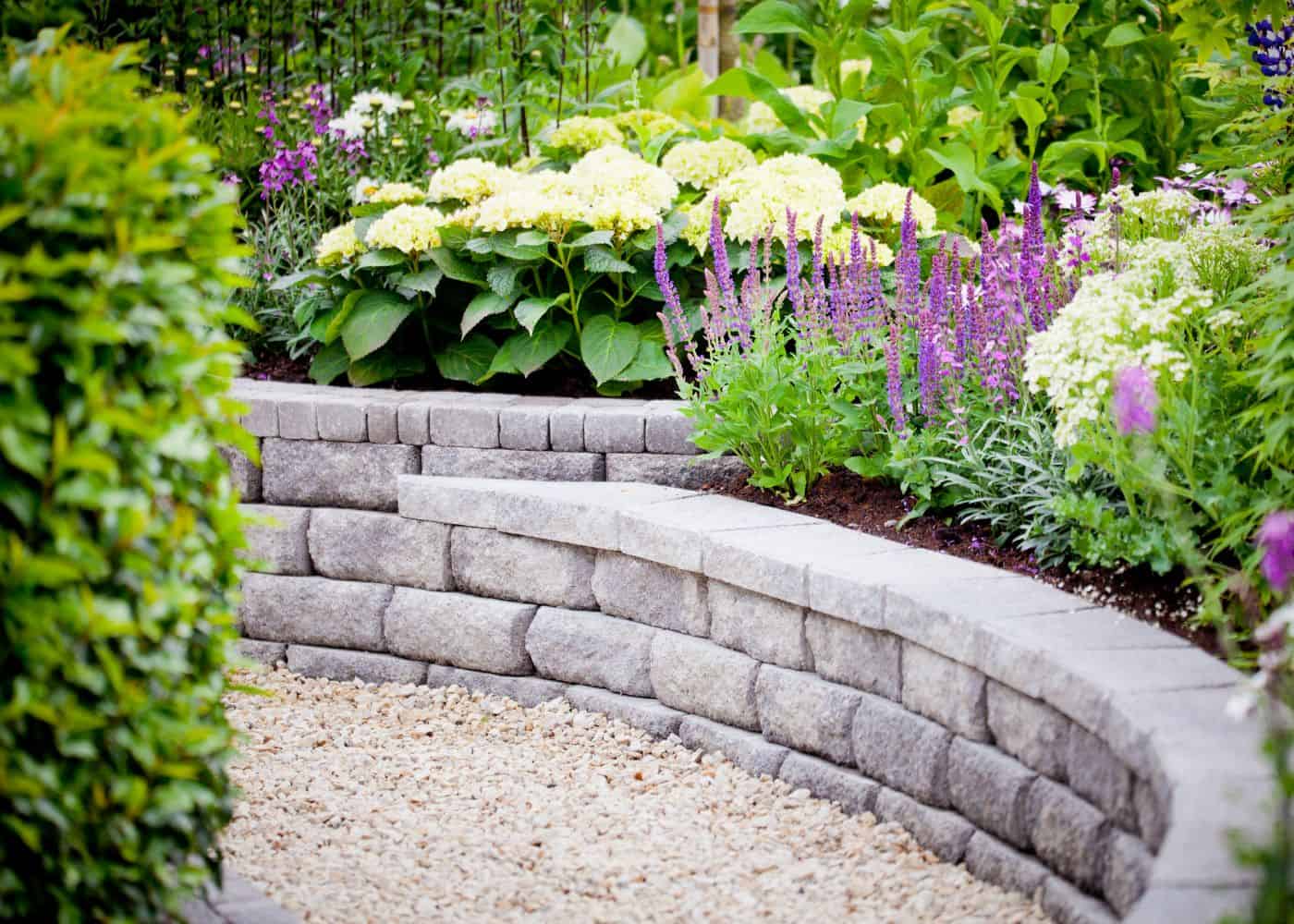
For other types, like bigleaf and oakleaf, wait until midsummer after they have bloomed to do any major pruning. These types are more tolerant of heavy pruning. You can cut back up to one-third of the plant’s height without harming it too much. Again start by removing any dead, diseased, or damaged branches first, then take out crossing or rubbing branches that can cause damage over time.
It’s also a good idea to shape up your shrub with light shearing once flowering has finished for both early and late-blooming varieties; this will help keep it neat and tidy throughout the growing season while encouraging bushier growth next year and larger flowers.
When trimming your hydrangea, make sure you use sharp garden scissors or loppers so that you don’t tear off chunks from stems that could lead to infection later on down the line – always better safe than sorry. Finally, remember not to remove all old wood at once since some older stems may still produce blooms in future years if left alone – give them a light trim instead every now and again when necessary. Less is usually more when it comes to hydrangea pruning.
Propagating hydrangea plants
Hydrangeas can be propagated via cuttings, layering, division, and seeds. Rooting stem cuttings is likely the most popular method for most home gardeners.
Rooting cuttings
Hydrangeas can be rooted from different types of cuttings, including softwood stem cuttings, hardwood cuttings, and leaf cuttings.
In late spring or early summer, you can take softwood stem cuttings. Take some 4-6 inch long cuttings from the tips of young, green stems off a mother plant. Remove the lower leaves and dip the cut end in rooting hormone. Plant in a pot with well-draining soil, keep it moist and place it in indirect sunlight.
In late fall or winter, you can take hardwood stem cuttings. Cut 8-12 inch long sections of mature, woody stems. Remove leaves and plant them in well-draining soil outdoors or in a cold frame. They’ll root over winter.
Hydrangeas can also be rooted from leaves. Take a healthy hydrangea leaf, cut it into sections, and plant them in a container with soil. Keep it humid until roots form. Covering each leaf with a clear plastic bag can be helpful.
Other methods
Other common methods of propagating hydrangeas include layering, division, and germinating fertile hydrangea seeds.
Hydrangeas work quite well with propagation by layering. In the spring, bend a low-growing stem to the ground, make a small nick along the side, and bury it in nearby soil. You may wish to use a stone, brick, or landscape staple to keep the branch bent down into the soil. Keep it moist. After a year, cut it from the parent plant.
Division works well for certain types of hydrangeas, such as smooth hydrangeas. Dig up a mature hydrangea and separate it into sections, making sure each division has roots and shoots. Replant the divisions in new locations.
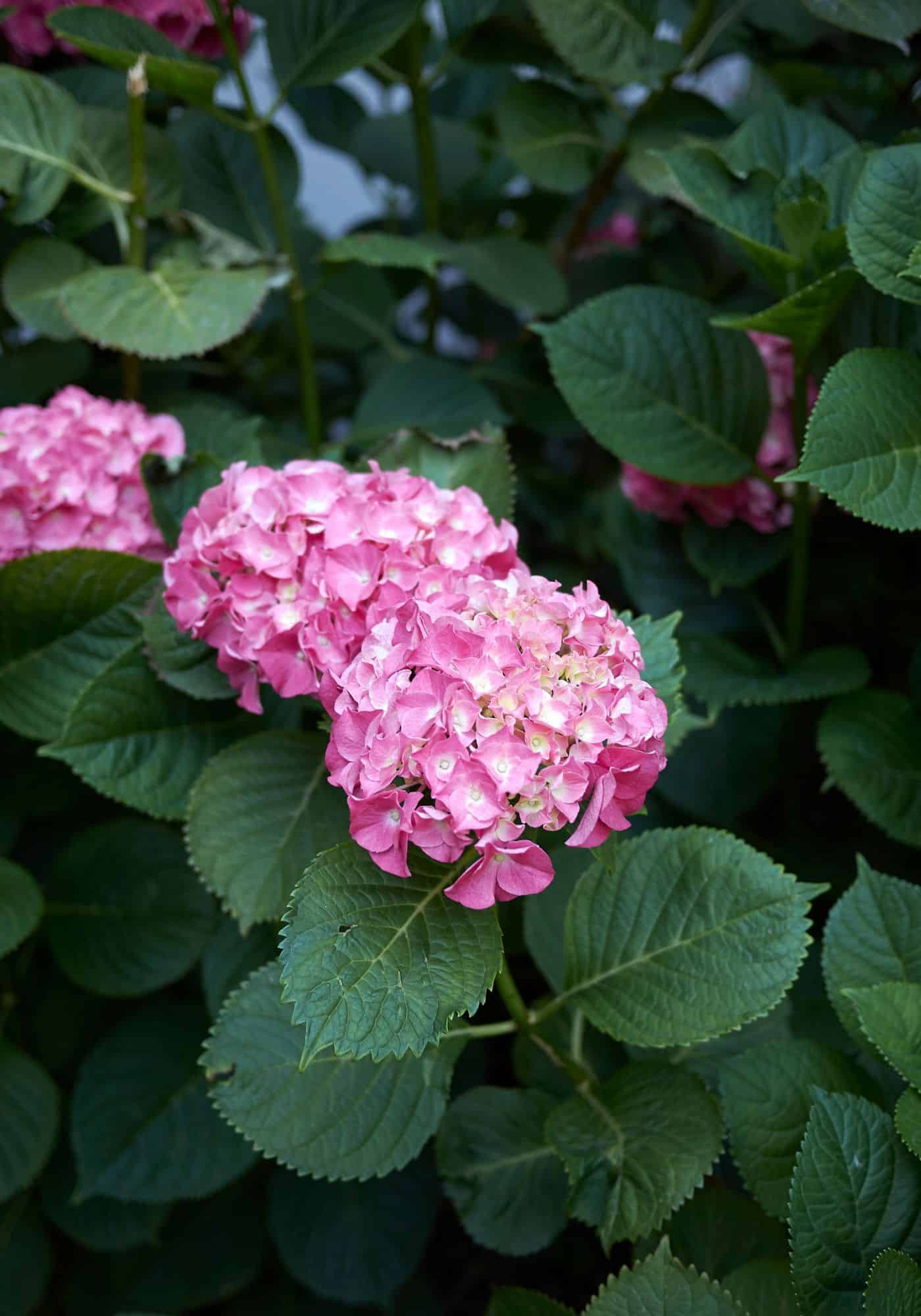
Companion plants for hydrangeas
Hydrangeas are lovely on their own, but they really thrive when they are part of a functioning overall ecosystem. This might include some larger trees for afternoon shade, some groundcover plants as living mulch, and certain plants to attract beneficial insects to keep pests under control. With all of these components in place, your hydrangeas will thrive and produce beautiful blooms for many years to come.


